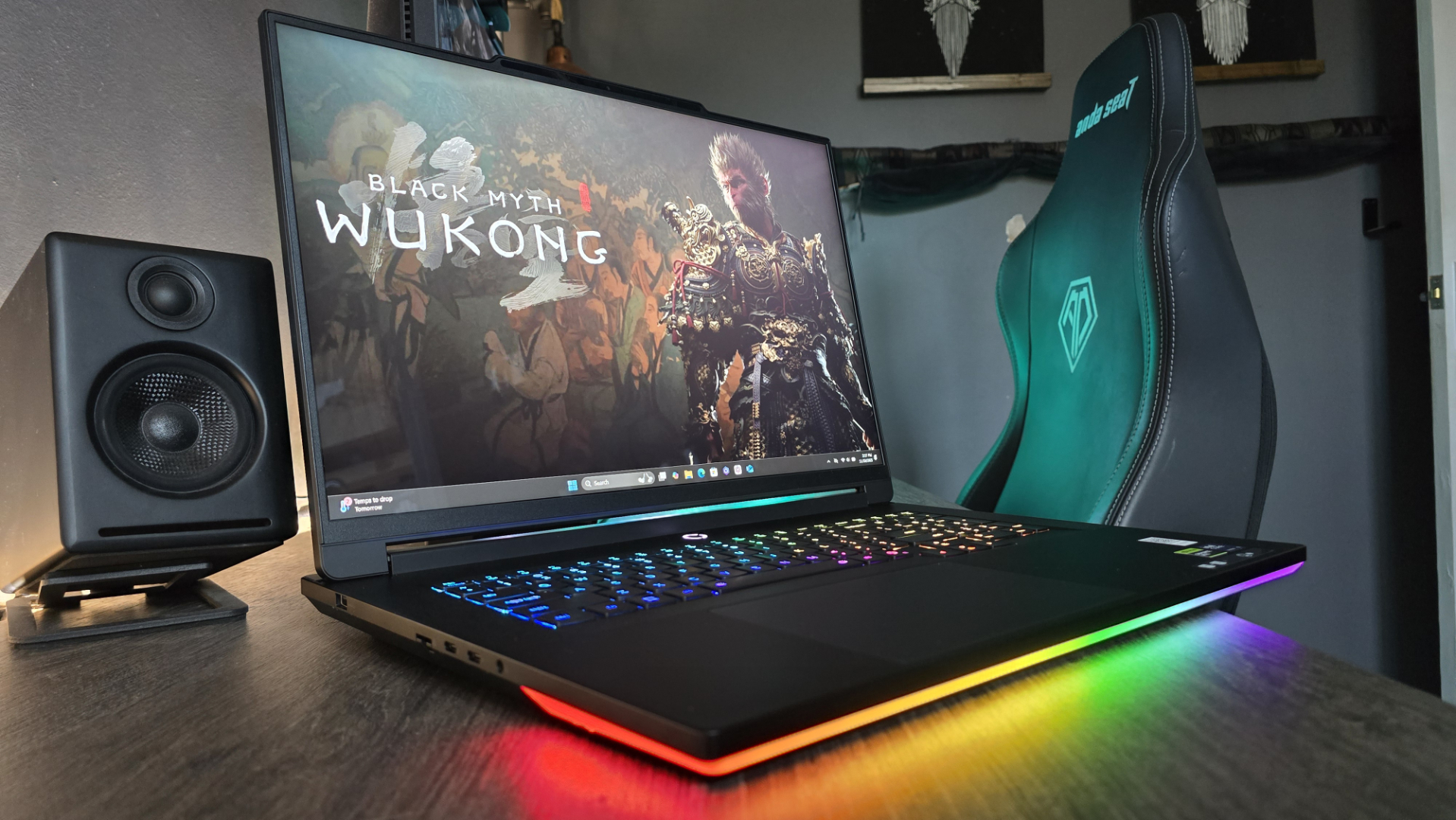The latest AMD RDNA 5 rumours are complicated but it looks like there really is going to be a high-end next-gen GPU to take on Nvidia's best graphics card
And could low-end RDNA 5 use laptop memory?

Rumours involving AMDs next-gen graphics technology—whether you want to go by RDNA 5 or the new UDNA nomenclature—are reaching critical mass. We've already seen claims that AMD is plotting a high-end GPU with an incredible 192 CUs. Now one of the most reliable sources of advanced GPU information in the business has released a new leak that cuts the compute unit count in half to just 96 for the top RDNA 5 model.
Oh, and it looks like low-end RDNA 5 GPUs might use laptop memory. So, what's going on?
Earlier leaks from YouTube channel Moore's Law is Dead posited a four-chip lineup for AMD's RDNA 5 graphics family, codenamed AT0, AT2, AT3 and AT4. Respectively, those chips were said to have a maximum of 192, 80, 48 and 24 compute units or CUs.
However, Kepler_L2 has posted a quartet of block diagrams for the new GPUs showing CU counts of half of those figures, therefore 96, 40, 24 and 12 CUs, respectively. At first glance, that doesn't seem to make sense.
For starters, the CU counts are just very low. AMD's top GPU from the elderly RDNA 3 family, the Radeon RX 7900 XTX, had 96 CUs way back in late 2022, for instance. Likewise, AMD's current Radeon RX 9060 XT has 32 CUs. That uses the Navi 44 GPU, which is roughly equivalent to the AT3 GPU from the rumoured RDNA 5 family. Would AMD really drop the CU count from 32 to 24 for the 9060 XT's replacement?
The most likely answer is no and that the two rumour sources don't actually conflict. The narrative here concerns how AMD measures or defines a CU. It's thought that for RDNA a CU is what used to be called a Work Group Processor or WGP. And can you guess how many CUs a WGP contains in previous RDNA architectures?
| Row 0 - Cell 0 | AT0 | AT2 | AT3 | AT4 |
CUs (old measure) | Up to 192 | Up to 80 | 48 | 24 |
CUs (new measure) | Up to 96 | Up to 40 | 24 | 12 |
Memory bus width | 512-bit | 192-bit | 256-bit (LPDDR5X) | 128-bit (LPDDR5X) |
Equivalent current AMD GPU | None | Radeon RX 9070 XT | Radeon RX 9060 XT | None |
That's right, two CUs. In other words, AMD may have renamed WGP to CU for RDNA 5 and thus 96 RDNA 5 CUs is equivalent to 192 RDNA 4 and earlier CUs. If that's correct, the top AT0 GPU is indeed a monster and that 9060 XT replacement suddenly has 50% more CUs, effectively, than before.
Keep up to date with the most important stories and the best deals, as picked by the PC Gamer team.
At this point, it's worth noting that the maximum CU counts may not translate into actual gaming GPUs. MLID's rumour indicated that while AT0 offers 192 CUs (by the old measure), the top gaming GPU for RDNA 5 would be cut down to 154 old-style CUs. But that's still a massive jump on the 64 CUs in the Radeon RX 9070 XT, which is AMD's current fastest RDNA 4 chip.
What's more, RDNA 5 is expected to get a big boost in ray-tracing and path-tracing that goes well beyond the simple CU counts, however you measure them. Exciting.
As if that's not enough, another detail that's emerged concerns the two low-end dies. In Kepler_L2's block diagrams, the AT3 die is actually shown with more memory controllers than AT2.
If that doesn't seem to make much sense, MLID has said that both AT3 and AT4 will actually use LPDDR5X laptop memory instead of GDDR6 or GDDR7 graphics memory. To achieve reasonable bandwidth, however, it's said to use either a 256-bit or 384-bit memory bus.

If each memory controller on Kepler_L2's diagram is indeed 32-bit, then AT3 has a 256-bit bus, which squares with MLID's information. The objection here involves GPU size and particularly chip perimeter size. Memory controllers take up a lot of space and you wouldn't normally thing that a lower-end GPU would be bit enough for a 256-bit bus.
However, that problem can be solved by stacking memory controllers atop one another, an approach AMD indeed takes with its Strix Halo laptop APU, which also has a 256-bit bus using LPDDR5X memory.
In the end, this is all speculation until it's official. But these leaks are beginning to coalesce into a plausible, coherent whole. And we certainly hope they are true. Because they indicate AMD having a full-on crack at a full stack of gaming. GPUs for the next generation.

1. Best overall: AMD Radeon RX 9070
2. Best value: AMD Radeon RX 9060 XT 16 GB
3. Best budget: Intel Arc B570
4. Best mid-range: Nvidia GeForce RTX 5070 Ti
5. Best high-end: Nvidia GeForce RTX 5090

Jeremy has been writing about technology and PCs since the 90nm Netburst era (Google it!) and enjoys nothing more than a serious dissertation on the finer points of monitor input lag and overshoot followed by a forensic examination of advanced lithography. Or maybe he just likes machines that go “ping!” He also has a thing for tennis and cars.
You must confirm your public display name before commenting
Please logout and then login again, you will then be prompted to enter your display name.

